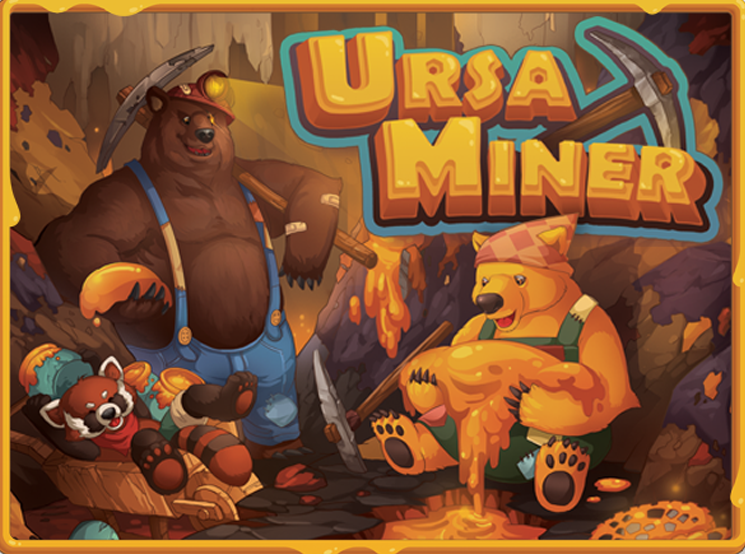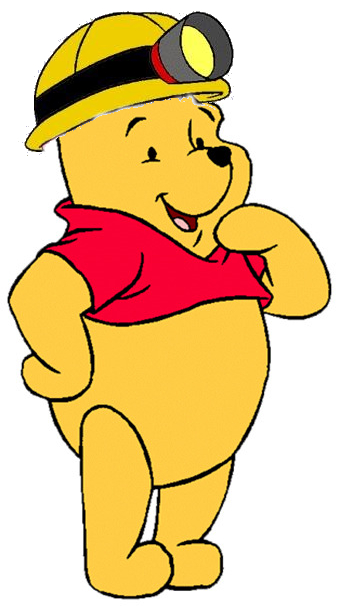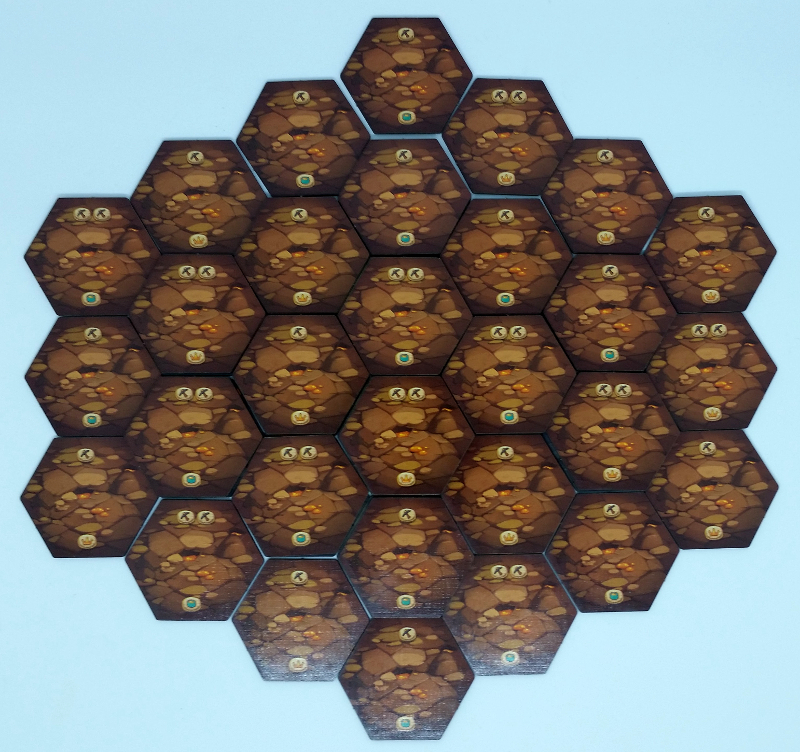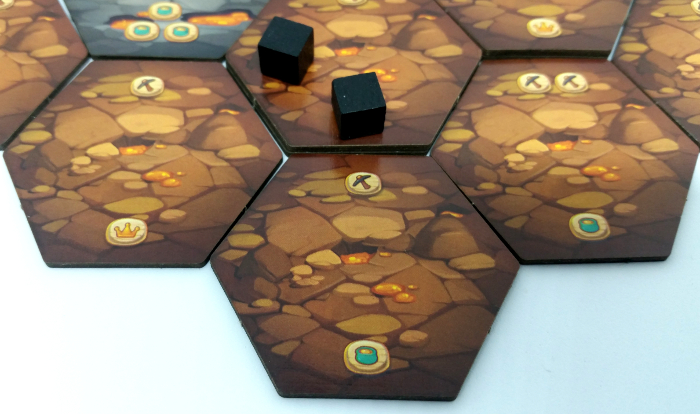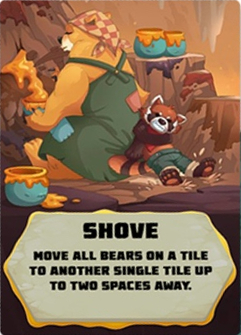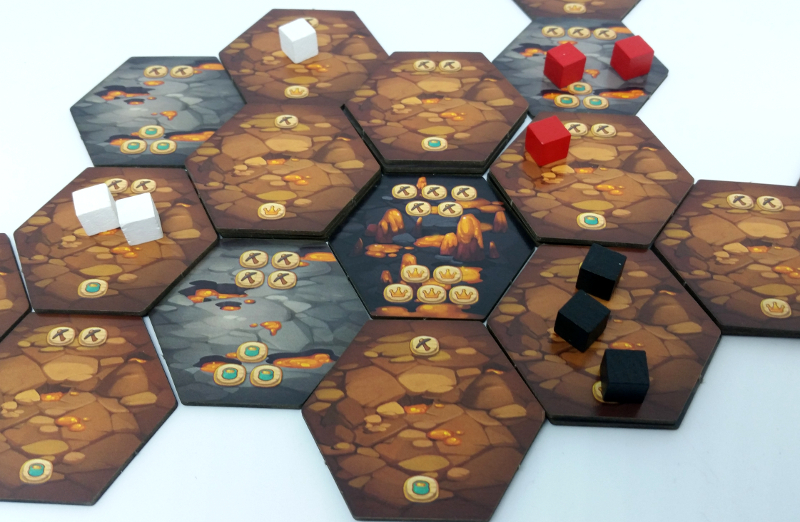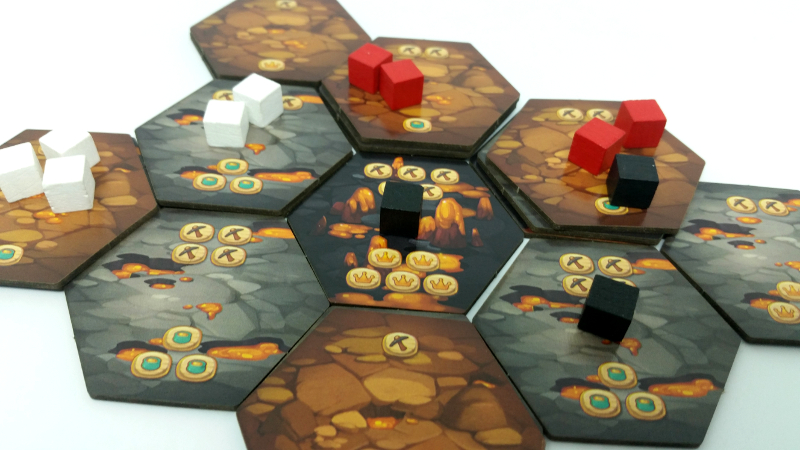As the number of new people entering the gaming hobby continues to rise, so too does the volume of new games brought to market. It’s highly commendable on the one hand, as it means that more and more designers are willing to take a chance at bringing their dreams to life and sharing it with others. This is especially true in the area of Filler Games: lightweight casual games designed to be played in under 45 minutes.
However, due to this ever-growing field the challenge of making an appealing and memorable half hour game has become more and more difficult. Indeed, to create a simple, streamlined game worthy of recognition, you have to create something highly innovative and / or find some way of grabbing people’s attention. It’s no easy task, for sure.
In fact, the odds of pulling it off successfully nowadays can be pawsititively grizzly.
Oh yes, it’s going to be that kind of preview. Because with a name like Ursa Miner, it brings it on itself.
Ursa Miner is a casual family-friendly tile game and the inaugural title by designers Michael Batista and Eli Kosminsky of Room and Board Games. In this quick and upbeat jaunt, 2-4 players command teams of bears as they attempt to mine the most royal jelly from Mount Honeycomb.
Essentially, the whole concept is what would happen if Winnie the Pooh stole Gopher’s hat and went on a mining spree.
The game begins by constructing the multi-tiered board itself, Mount Honeycomb. Similar to many island-based tiles games such as Survive or Taluva, Ursa Miner’s mountain consist of three tile layers, the size of which depends on the number of players. The topmost layer contains the easiest tiles to mine, with second and third tiers bearied underneath the more central tiles waiting for players to claw them up.
Each player begins by placing their two bears on a single tile, which will be their starting point in their quest for the sweet sweet treasure that lies beneath. Don’t worry about Mount Honeycomb being able to house whole teams of miners though. Honeycomb’s big, yeah, yeah, yeah. It’s not small, no, no, no.
Also, try not to think of the size or number of bees required to create a veritable mountain of honey…
Turns in Ursa Miner are quite simple, making the game incredibly accessible to a wide range of ages and player types. On your turn, each of your bears has the option of Moving and / or Mining, which can be done in either order. Moving a bear simply means moving to any adjacent tile space.
Yet to successfully Mine a tile and remove it from the board, it must koalify for three basic rules. First, you must have enough bears on adjacent tiles equal to or greater than the number required on the tile. Second, to avoid any workplace incidents, you can’t Mine any tile with a bear standing on it. Finally, to avoid anyone becoming trapped in the carved out mines of Mount Honeycomb, you can never remove a tile that would split the board.
There are two types of tiles to potentially claim in Ursa Miner: honey and royal jelly. Honey tiles (aside from being delicious) are primarily used to hire more bears to your crew. Royal jelly tiles by contrast provide you with the VP needed to win the game. At the end of 7-10 turns, the player with the most royal jelly in their position is the winner.
As an alternative move, a bear may forgo Mining in favor of Moving twice, which can be useful in cases where you may want to position yourself to claim a better tile the next turn or to strategically prevent another player from getting it instead.
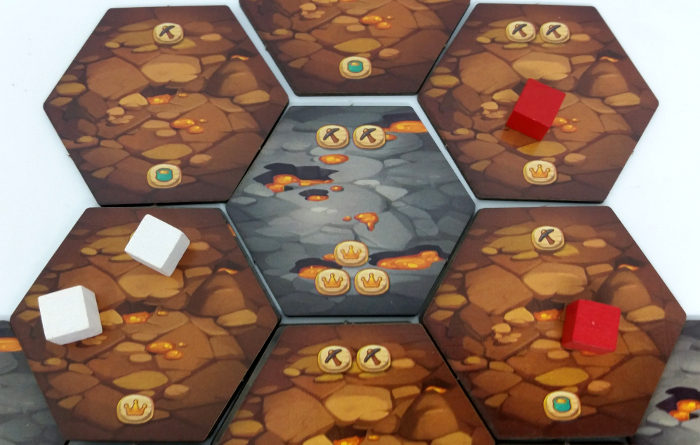
Both teams are able to Mine this 3-jelly tile. Who will be the first?? The suspense is unbearable.
Prototype Shown
Before ending your turn, you may hire on a new crew member by discarding three tile pips worth of honey. Doing so recruits a new bear into the mine, which in turn provides the muscle needed to access deeper, more valuable tiles.
In addition to your focus on bear husbandry are the game’s Bonus cards. Every player starts with one and draws another at random at the end of their turn. Bonus cards serve two purposes, both of which help give Ursa Miner some added depth and structure. Their more immediate impact is when they’re used for their one-time use effect. Bonus cards provide a number of unique abilities throughout the course of the game, each of which can be quite advantageous at the right moment, and they can be used at any point during your ursine-based actions.
That said, Bonus cards tend to foster a ‘use it or lose it’ mentality, as you’re limited to using just one per turn. While using every Bonus card isn’t a requirement to winning – they are called Bonus cards after all – the fact that you only have the means of using one a turn means that you’ll have to decide if you want to incorporate them into your plans for the turn or not.
Given their inherent usefulness most of the time though, the pawssibility of using them tends to be pretty high.
Their second use is as a timer fur the game. When the final Bonus card is drawn, every player will have one more turn to dredge up as much jelly as they can before the end of game shift change. The number of cards provided each game scales depending on the number of players, and this scaling process works particularly well, keeping Ursa Miner as a concise but entertaining experience that doesn’t drag on longer than it should.
While Ursa Miner is not particularly cutthroat or combative, there are definite moments as the game progresses where you can feel the competition bruin, especially as the number of available tiles dwindles. Successfully maneuvering around the board and timing your moves on when to grab specific tiles gives the game a nice layer of lightweight tactical decisions to make, and blocking one another from capitalizing on better tiles as everyone scurries about isn’t just commonplace – it’s expected. As a result the game flows quite succulently over the span of a half hour. Like…some kind of substance that doesn’t quite come to mind all of a sudden…
Ursa Miner doesn’t reinvent the wheel with its presence, but it also doesn’t need to. Instead it illustrates that even in the ever-growing field of quick and casual, there’s still plenty of room for a well executed tile game that’s small on time commitment and big on flavor. Though the game contains some light strategy such as blocking players from grabbing specific tiles or playing cards to get a leg up on one another, Ursa Miner’s appeal resides just as much with an endearing theme, adorable artwork, and the age-old tactile pleasure of navigating a continually shrinking board state. If you’re seeking a sweet little half hour tile game, you can’t go wrong checking out Ursa Miner over on its Kickstarter.
At the very least its worth a round of a-paws.
Photo Credits: Ursa Miner cover and artwork by Room And Board Games.

